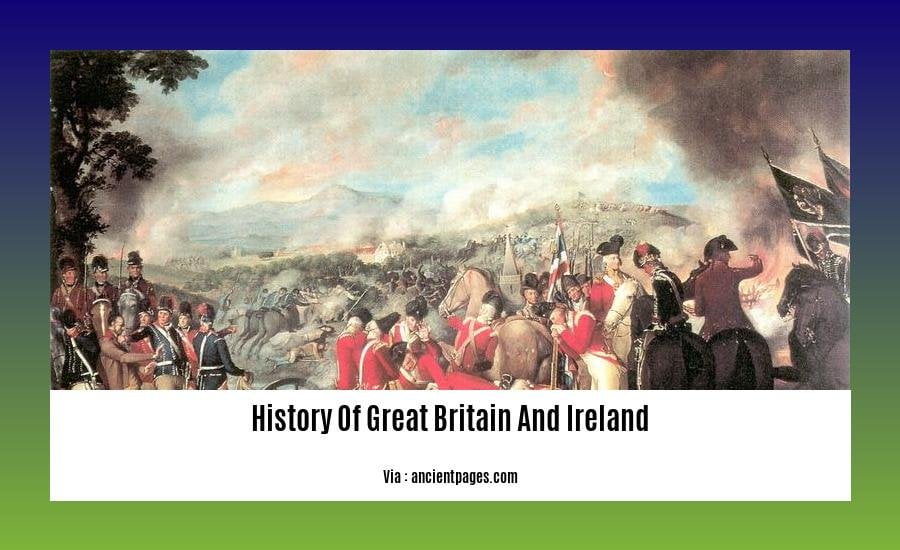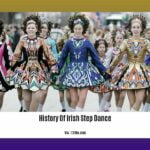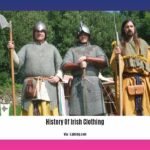[- A Historian’s Perspective: Unraveling the History of Great Britain and Ireland] – Journey through the annals of Great Britain and Ireland, where history unfolds as a captivating tapestry of events, shaping the nations into what they are today. Embark on an exploration of their intertwined past, unlocking the secrets of influential figures, pivotal conflicts, and profound cultural movements that have left an enduring legacy on these isles.
Key Takeaways:
- The United Kingdom of Great Britain and Ireland was formed by merging the Kingdom of Great Britain and the Kingdom of Ireland in 1801.
- The Irish Rebellion of 1798 led to the loss of Ireland’s independence and its union with Great Britain.
- The Age of Reform (1820-1837) brought stability and reforms, with Britain experiencing only one significant war during this period.
- The Victorian era (1837-1901) witnessed the peak of the British Industrial Revolution.
- The Irish Home Rule movement advocated for greater autonomy for Ireland within the United Kingdom.
History Of Great Britain And Ireland

In the winding tapestry of European history, the intertwined destinies of Great Britain and Ireland have woven a complex and fascinating tale. The union of these two islands, separated by a narrow stretch of water, has been marked by both harmony and strife, cooperation and conflict.
The Rise of the United Kingdom
The year 1801 witnessed the birth of the United Kingdom of Great Britain and Ireland. This momentous event brought together the Kingdom of Great Britain, which included England, Scotland, and Wales, with the Kingdom of Ireland. This union was forged in response to the Irish Rebellion of 1798, which had shattered hopes for Irish independence.
The Age of Reform and Revolution
The 19th century ushered in a period of profound change for the United Kingdom. The Age of Reform (1820-1837) brought about significant political and social reforms, including the extension of voting rights and the abolition of slavery. The Victorian era (1837-1901), marked by the reign of Queen Victoria, witnessed the peak of the Industrial Revolution, transforming Britain into a global economic powerhouse.
The Irish Home Rule Movement
Throughout the 19th century, the Irish Home Rule movement gained momentum, advocating for greater autonomy for Ireland within the United Kingdom. This movement culminated in the Government of Ireland Act of 1914, but its implementation was delayed by the outbreak of World War I.
The 20th Century and Beyond
The 20th century brought about new challenges and transformations for Great Britain and Ireland. The Irish War of Independence (1919-1921) resulted in the creation of the Irish Free State, which later became the Republic of Ireland. The United Kingdom emerged victorious in World War I and II, but faced economic and social turmoil in the aftermath.
A Legacy of Interconnectedness
Despite their political separation, Great Britain and Ireland remain deeply interconnected. The shared historical experiences, cultural exchanges, and economic ties have fostered a lasting bond between the two nations. The history of Great Britain and Ireland is a testament to the resilience of nations, the power of compromise, and the enduring legacy of shared heritage.
Delve into the rich History of Great Britain, a tapestry of events that have shaped a nation.
Journey through the History Of Great Britain Timeline, a chronological roadmap of its pivotal moments.
Discover the intricacies of the History Of Great Britain Monarchy, a lineage of rulers who have left an enduring mark.
Listen to the voices of the past in the engaging History Of Great Britain Podcast, uncovering hidden narratives.
Explore the complex relationship between History Of Great Britain And India, a story of colonization and shared heritage.
Uncover the dark chapters of History Of Great Britain And Slavery, a legacy that continues to shape the nation’s identity.
Norman Conquest and Medieval Kingdoms

The Norman Conquest of England (1066)
In 1066, Duke William of Normandy sailed across the English Channel with an army of Norman knights and foot soldiers. They landed at Pevensey Bay and marched inland, conquering the English forces at the Battle of Hastings. William was crowned king of England on Christmas Day of the same year.
The Norman Conquest had a profound impact on English society, politics, and culture. The Normans introduced a new feudal system, which divided the land into fiefs held by Norman lords. They also introduced French language, customs, and laws, which gradually replaced the Anglo-Saxon customs and laws.
The Norman Conquest of Ireland (Late 12th Century)
The Norman Conquest of Ireland was a more gradual process than the conquest of England. It began in the late 12th century, when Anglo-Norman knights and adventurers began to acquire land in Ireland. They established Anglo-Norman lordships, which were often in conflict with the Irish kings and chieftains.
The Norman Conquest of Ireland had a significant impact on Irish society, politics, and culture. The Anglo-Normans introduced a new feudal system, similar to the one they had established in England. They also introduced French language, customs, and laws, which gradually replaced the Gaelic customs and laws.
Key Takeaways:
The Norman Conquest of England in 1066 was a significant turning point in English history, leading to profound changes in society, politics, and culture.
The Norman Conquest of Ireland was a more gradual process, beginning in the late 12th century, and also had a significant impact on Irish society, politics, and culture.
Sources:
– Norman Conquest
– Norman Conquest of Ireland
Emergence of England and Scotland
The Emergence of England and Scotland is a fascinating chapter in British history. These two nations, now united under the United Kingdom, have distinct histories and cultures that have shaped their identities.
The Norman Conquest
A pivotal moment in English history was the Norman Conquest of 1066. William, Duke of Normandy, led an invasion force that defeated the English at the Battle of Hastings. This conquest brought about significant changes in English society and government.
The Rise of Scotland
Across the border, in 1286, Alexander III of Scotland died without an heir, sparking a succession crisis. Edward I of England attempted to exert control over Scotland, leading to the Wars of Scottish Independence.
Under the leadership of William Wallace and Robert the Bruce, the Scots fought for their independence, culminating in the decisive Battle of Bannockburn in 1314.
The Union of the Crowns
In 1603, James VI of Scotland ascended to the English throne as James I, uniting the crowns of England and Scotland. This personal union laid the foundation for the eventual political union of the two nations.
Key Takeaways:
- The Norman Conquest of England in 1066 brought about major changes in English society and government.
- The Wars of Scottish Independence (1296-1357) resulted in Scotland’s victory at Bannockburn and established its independence.
- The union of the English and Scottish crowns in 1603 paved the way for the eventual political union of the two nations.
Sources:
- Wikipedia: Norman Conquest
- Britannica: Wars of Scottish Independence
The Union and Home Rule
The seed of the Home Rule movement was sown in the Union of 1801, an act of the British Parliament, which united the Kingdoms of Great Britain and Ireland, creating the United Kingdom of Great Britain and Ireland.
Over time, voices of discontentment grew louder in Ireland, fueling the Home Rule movement led by Isaac Butt, who sought self-governance for Ireland within the British Empire. The movement gained momentum, culminating in the Government of Ireland Act of 1914, which promised limited autonomy for Ireland, but its implementation was postponed due to the outbreak of the First World War.
The question of Home Rule was closely intertwined with issues of Irish identity, national aspirations, and the relationship between Ireland and Britain. Supporters envisioned a self-governing Ireland with its own parliament and control over domestic affairs, while opponents feared it would weaken the United Kingdom and undermine its sovereignty.
In the tumult of the early 20th century, the Home Rule movement became a flashpoint for political and social unrest, leading to the Irish War of Independence and ultimately the establishment of the Irish Free State (later the Republic of Ireland).
Key Takeaways:
- The Act of Union in 1801 united Great Britain and Ireland.
- The Home Rule movement advocated for Irish self-governance within the British Empire.
- Supporters of Home Rule desired a self-governing Ireland with its own parliament.
- Opponents of Home Rule feared it would weaken the United Kingdom.
- The Home Rule movement was a pivotal chapter in the relationship between Ireland and Britain.
Sources:
- Home Rule | Irish Parliament, British Parliament, Home Rule Bill
- Explainer: What was Home Rule? | Century Ireland – RTE.ie
FAQ
Q1: Under what circumstances did the United Kingdom of Great Britain and Ireland come to be?
Q2: What significant historical events marked the Norman Conquest of England and Ireland?
Q3: How did the era of reform and the Victorian era shape the history of Great Britain?
Q4: Explain the significance of the Irish Home Rule movement and its impact on the relationship between Ireland and Great Britain.
Q5: What are the key factors that contributed to the “disuniting” of the United Kingdom, and how has this process impacted the political landscape of the region?
- Unlocking Francis Alexander Shields’ Finance Empire: A Comprehensive Biography - July 12, 2025
- Unveiling Francis Alexander Shields: A Business Legacy - July 12, 2025
- Francis Alexander Shields’ Business Career: A Comprehensive Overview - July 12, 2025















